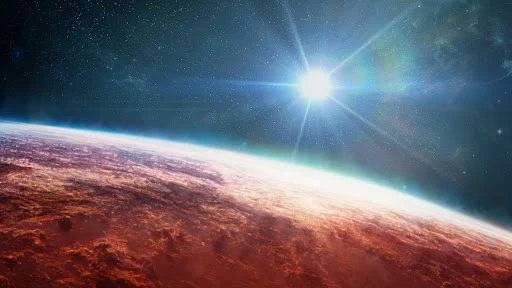The researchers found that JWST could detect the presence of certain gases in Earth's atmosphere that are produced by living organisms, such as oxygen, methane, and nitrous oxide. They also found that JWST could detect the artificial light produced by human civilization.
The study authors caution that it is still very difficult to detect life on exoplanets, even with JWST. But their results suggest that JWST could be used to search for signs of intelligent life on Earth-like planets in our galaxy.
Here are some of the key findings from the study:
- JWST could detect the presence of oxygen in Earth's atmosphere from a distance of up to 50 light-years.
- JWST could detect the presence of methane in Earth's atmosphere from a distance of up to 30 light-years.
- JWST could detect the presence of nitrous oxide in Earth's atmosphere from a distance of up to 20 light-years.
- JWST could detect the artificial light produced by human civilization from a distance of up to 10 light-years.
The study authors note that the presence of these gases in Earth's atmosphere does not necessarily mean that there is life on Earth. However, the detection of all four gases together would be a strong indication that life exists on our planet.
The study's findings are exciting because they suggest that JWST could be used to search for signs of intelligent life on Earth-like planets in our galaxy. This would be a major breakthrough in the search for extraterrestrial life.
It is important to note that the study is only a simulation. It is still not clear whether JWST would be able to detect life on Earth from across the galaxy in practice. However, the study's findings suggest that it is possible.
If JWST is able to detect signs of life on Earth from across the galaxy, it would be a major discovery. It would show that life is not unique to Earth and that there could be other intelligent civilizations out there in the universe.Google itprofile picture
The researchers found that JWST could detect the presence of certain gases in Earth's atmosphere that are produced by living organisms, such as oxygen, methane, and nitrous oxide. They also found that JWST could detect the artificial light produced by human civilization.
The study's findings are exciting because they suggest that JWST could be used to search for signs of intelligent life on Earth-like planets in our galaxy. This would be a major breakthrough in the search for extraterrestrial life.
However, it is important to note that the study is only a simulation. It is still not clear whether JWST would be able to detect life on Earth from across the galaxy in practice. There are a number of challenges that would need to be overcome, such as the fact that Earth's atmosphere is very thin and that the light from our planet is very faint.
Nevertheless, the study's findings suggest that JWST has the potential to revolutionize our understanding of the universe and the search for life beyond Earth.
Here are some additional thoughts on the study:
- The study's findings are significant because they suggest that JWST could be used to search for signs of intelligent life on Earth-like planets in our galaxy. This is a major step forward in the search for extraterrestrial life.
- The study's authors caution that it is still very difficult to detect life on exoplanets, even with JWST. However, their results suggest that JWST could be used to narrow down the search for habitable planets and identify those that are most likely to harbor life.
- The study's findings are also exciting because they suggest that JWST could be used to learn more about the early history of life on Earth. By studying the atmospheres of other planets, JWST could help us to understand how life first emerged on Earth and what conditions are necessary for life to thrive.
Overall, the study's findings are a promising development in the search for life beyond Earth. JWST is a powerful telescope with the potential to revolutionize our understanding of the universe.



